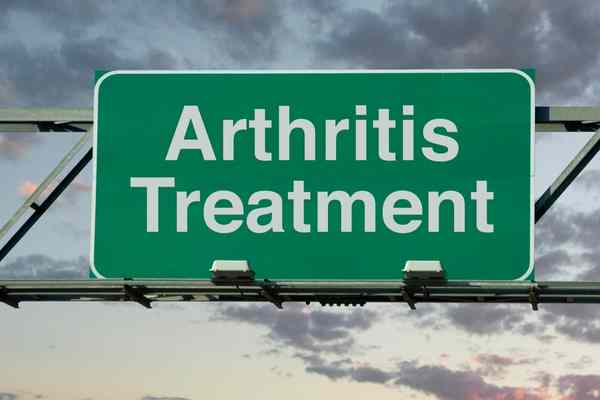Arthritis is a common pain condition stems from inflammation in the joints. It is a chronic condition that affects a large portion of people worldwide and can have a significant impact on their quality of life. This article will provide an overview of arthritis pain, including the types of arthritis, the parts of the body that can be affected, what it feels like, how it is diagnosed, the treatments that are available, and how people can best manage the condition.
Types of Arthritis
There are several types of arthritis, each with its unique symptoms and causes. The most common types of arthritis are:
- Osteoarthritis: The most common type of arthritis is caused by the wear and tear of the cartilage in the joints. It typically affects the joints in the hands, knees, hips, and spine. Anyone can develop Osteoarthritis, usually later in life as the body wears down.
- Rheumatoid arthritis (RA): an autoimmune disease that causes inflammation in the joints. It can affect multiple joints and is symmetrical, and RA usually affects the same joints on both sides of the body.
- Gout: This type of arthritis comes from accumulation of uric acid crystals in the joints. It typically affects the big toe but can also affect other joints like the knees, ankles, and fingers.
- Psoriatic arthritis: This type of arthritis affects people with psoriasis, a skin condition that causes red, scaly patches. Commonly causes pain and swelling in the joints, as well as in the tendons and ligaments.
Parts of the Body Affected by Arthritis
Arthritis may affect any joint in the body, but some of the most commonly affected joints include the:
- Hands
- Knees
- Hips
- Spine
- Feet
- Ankles
- Elbows
- Wrists
What it Feels Like
Arthritis symptoms vary depending on the type, but the most common symptoms include the following:
- Pain: Arthritis can cause pain and discomfort in the affected joints. The pain can be a dull ache or a sharp pain and can be worse with movement or weight-bearing activities.
- Swelling: Arthritis can cause swelling and tenderness in the affected joints. The swelling may be accompanied by redness and warmth.
- Stiffness: Arthritis can cause stiffness in the affected joints, especially in the morning or after periods of inactivity.
- Decreased range of motion: Arthritis can cause a restricted range of motion in the affected joints, making it difficult to perform everyday activities.
Diagnosis of Arthritis Pain
Arthritis diagnosis is based on a combination of symptoms, medical history, and physical examination. A doctor may ask about the location, duration, and severity of the pain, as well as any other symptoms that the patient may be experiencing. X-rays, magnetic resonance imaging (MRI), and other imaging tests may be used to help diagnose the type of arthritis that the patient has and to assess the severity of joint damage.
Treatments for Arthritis Pain

The goal of treatment for arthritis is to reduce pain, improve function, and prevent joint damage. Treatment options for arthritis include:
- Medications: Nonsteroidal anti-inflammatory drugs (NSAIDs), such as naproxen, ibuprofen, and aspirin, can help reduce pain and inflammation.
- Physical therapy: can help improve joint mobility, reduce pain, and improve overall function. Exercises, such as range-of-motion exercises, strengthening exercises, and aquatic therapy, can be especially helpful.
- Assistive devices: Assistive devices, such as canes, crutches, and knee braces, can help reduce stress on affected joints and relieve pain.
- Joint injections: such as corticosteroid injections, can help reduce inflammation and relieve pain.
- Surgery: In severe cases, surgery may can repair or replace damaged joints.
Managing Arthritis Pain
In addition to medical treatment, several lifestyle changes can help manage arthritis pain. These include:
- Maintaining a healthy weight: Excess weight can put additional strain on the joints, making arthritis pain worse. Maintaining a healthy weight helps reduce the strain on the joints and reduce pain.
- Exercise: Regular exercise can help improve joint mobility, reduce pain, and improve overall function.
- Hot and cold therapy: Applying hot and cold packs to the affected joints can help relieve pain and reduce inflammation.
- Good posture: Maintaining good posture helps reduce stress on the joints and relieve pain. Good posture ensures the proper muscles are maintaining the body’s weight, thereby saving stress on the affects joints.
- Stress management: Stress can make arthritis pain worse, so it is essential to manage stress through techniques such as deep breathing, meditation, and relaxation.
In conclusion, arthritis is a common condition that causes pain and inflammation in the joints. It is diagnosed based on a combination of symptoms, medical history, and physical examination. Treatments for arthritis include medications, physical therapy, assistive devices, joint injections, and surgery. In addition to medical treatment, lifestyle changes, such as maintaining a healthy weight, exercise, hot and cold therapy, good posture, and stress management, can help manage arthritis pain.
Sources & Additional resources
- The National Institutes of Health (NIH) provides comprehensive information on arthritis, including symptoms, diagnosis, and treatment options. https://www.niams.nih.gov/health-topics/arthritis
- The Centers for Disease Control and Prevention (CDC) also provides information on arthritis, including the impact of the condition on quality of life and strategies for managing arthritis pain. https://www.cdc.gov/arthritis/index.htm
- The Arthritis Foundation provides information on various types of arthritis, including osteoarthritis, rheumatoid arthritis, and gout, as well as treatments and management strategies. https://www.arthritis.org/
- The American Physical Therapy Association provides information on the role of physical therapy in managing arthritis pain, including the benefits of exercise, joint mobility exercises, and assistive devices. https://www.apta.org/PTinMotion/News/2022/05/19/ArthritisAwarenessMonth/
Find more stories on the blog




